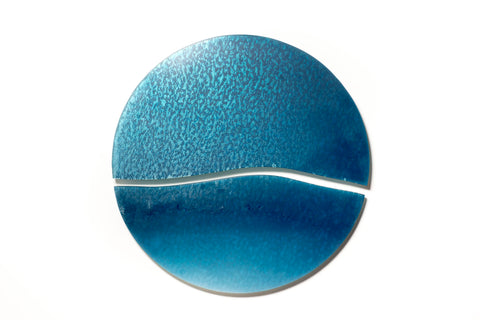Contemporary ceramic and glass artists use various techniques to represent Australian landscapes in their work. Some of the techniques commonly employed include:
Layering Artists often use multiple layers of glazes or glass to create depth in order to imitate the intricate layers of the Australian landscape, such as mountains, forests, and oceans. Working in kiln formed glass, Lucy Palmer (CAnberra, ACT, Australia) creates vast oceans and horizons by layering and sandwiching different colours of glass.


Moulding and shaping By moulding and shaping the medium, artists can create the contours and curves found in the unique topography of Australian landscapes, capturing the essence of the land's formations. Working in ceramics Sue Hewat (Canberra, ACT, Australia) moulds layers of porcelain in various colours onto wheel thrown vessels to represent the landscape. She carves out lines and imprints other shapes to create the effects of tidelines or fossils.

Ceramicist Jo Victoria recreates the shapes found in coastal environments to imitate those found in the rockpools near her studio on the South Coast of New South Wales (Australia).

And Robyn Campbell hand builds ceramic sculptures to reflect the shapes found in the mountain regions of Southern New South Wales and the ACT. Her highly textured surfaces echo the grasslands found in the region.

Incorporating natural elements Some artists incorporate natural elements such as sand, rocks, or minerals into their ceramic or glass work to directly connect their artwork to the Australian landscape. This technique allow artists to uniquely capture the beauty and diversity of Australian landscapes in their work.
Ceramicist Larissa Warren works with wild clay found around her studio on Tamborine Mountain in the Gold Coast hinterland (Queensland, Australia). The resulting colours and textures tie the work closely to the environment in which it was made.

By exploring these techniques, artists seek to capture the essence of the land and resonate with their audience on a personal and emotional level.

